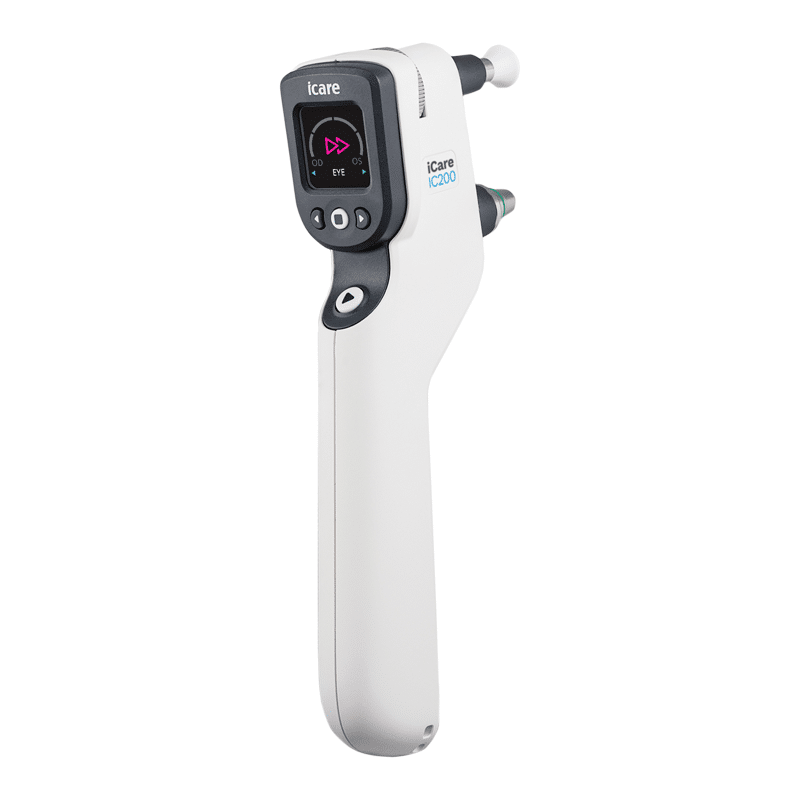iCare IC200 is a proven technique for obtaining accurate and rapid IOP measurements from all your patients. Measuring requires no anesthesia, drops, air puffs or other preparation
The Icare ic200 tonometer takes reliable measurements with wide flexibility in positioning. An intuitive user interface maximizes clinical efficiency even in the most demanding situations.
The Icare ic200 tonometer is designed for professional use in the surgical operating room and emergency room, as well as in the clinic.
Icare ic200 features
- The ic200 is fully portable, requires no anesthesia, and its freedom of positioning allows measurement of whether the patient is seated, standing, semi-seated, or supine or lateral.
A high-visibility indicator at the probe base confirms your positioning of the tonometer prior to measurement. A green light indicates measurement will be reliable, a red light indicates incorrect positioning.
FUNCTIONALITY WITH COMFORT
- Effortless probe loading with the same probe as for the Icare TA01i and ic100 tonometers
- The probe can’t accidentally drop from the device
- Easy menu in many languages
- Wireless (Bluetooth) printing and measurement transfer
- All six measurements required for calculation of a result can be performed individually – or in an automated series – at the press of a button.
- With Icare ic200 IOP measuring is fast, accurate and reliably repeatable, with individual readings displayed to one decimal mm Hg resolution.
 TECHNICAL DATA
TECHNICAL DATA
- Dimensions : 43mm[W] x 104mm[H] x 214mm[L]
- Weight : 165 g (without batteries), 260 g (with 4 x AA batteries)
- Power supply : 4 x AA non-rechargeable batteries, 1.5V alkaline LR6
- Measurement range : 7 – 50 mmHg
- Accuracy : ±1.2 mmHg (≤20 mmHg) and : ±2.2 mmHg (>20 mmHg)
- Repeatability (coefficient of variation) : <8%
iCare IC200 is the most versatile tonometer in iCare’s product portfolio. This flagship device is designed for professional use in the clinic as well as in eye surgery and emergency rooms. With 200 degrees of positional freedom, it can be measure intraocular pressure (IOP) whether the patient is standing, sitting, elevated or in a spine position. Extensive flexibility in positioning is especially useful in clinical, surgical or emergency settings when the patient’s eye pressure needs to be measured regardless of the patient’s positio
